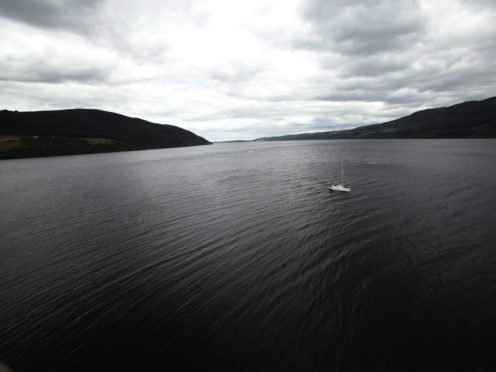
The legend of the Loch Ness Monster is most likely to have been sparked by sightings of giant eels, scientists say.
After combing the loch for samples of environmental DNA, they found that it is unlikely that Nessie is the last surviving prehistoric reptile.
The research, led by Professor Neil Gemmell from the University of Otago in New Zealand, saw 250 water samples taken from the edges, centre and very depths of Britain’s largest body of freshwater by volume.

The DNA from each sample was captured, extracted and sequenced and then compared to global DNA databases in a bid to create a comprehensive picture of life in the loch.
The findings quickly debunked one of the most popular theories: that the Loch Ness Monster could be a reptile, or population of reptiles, which survived from the time of the dinosaurs, such as a plesiosaur.
Other theories suggest that Nessie may be a giant catfish, a giant sturgeon, an eel or even a Greenland shark, which can live for up to 500 years.
The only possibility not ruled out by the research was that of a giant eel – perhaps explaining Nessie’s looped shape in the British imagination.
Professor Gemmell said: “There is a very significant amount of eel DNA. Eels are very plentiful in Loch Ness, with eel DNA found at pretty much every location sampled – there are a lot of them.
“So – are they giant eels? Well, our data doesn’t reveal their size, but the sheer quantity of the material says that we can’t discount the possibility that there may be giant eels in Loch Ness.”

He added: “Divers have claimed that they’ve seen eels that are as thick as their legs in the loch, whether they’re exaggerating or not – I don’t know – but there is a possibility that there are very large eels present in the loch.
“Whether they are as big as around 4m (13ft) as some of these sightings suggest – well, as a geneticist I think about mutations and natural variation a lot, and while an eel that big would be well outside the normal range, it seems not impossible that something could grow to such unusual size.”
He said further research was needed to test the theory, but added: “Based on our data, giant eels remain a plausible idea.”
Another finding from the research was the high levels of DNA from land-based species in the loch, including humans, dogs and farm animals such as sheep and cattle.
DNA from wild animals such as deer, badgers, foxes, rabbits, voles and multiple bird species was also found.
Dr Gemmell said: “These findings indicate (environmental) DNA surveys of major waterways may be useful for rapidly surveying biological diversity at a regional level.”
A documentary about the hunt for Nessie’s DNA is due to air on the Discovery Channel on September 15.

Enjoy the convenience of having The Sunday Post delivered as a digital ePaper straight to your smartphone, tablet or computer.
Subscribe for only £5.49 a month and enjoy all the benefits of the printed paper as a digital replica.
Subscribe